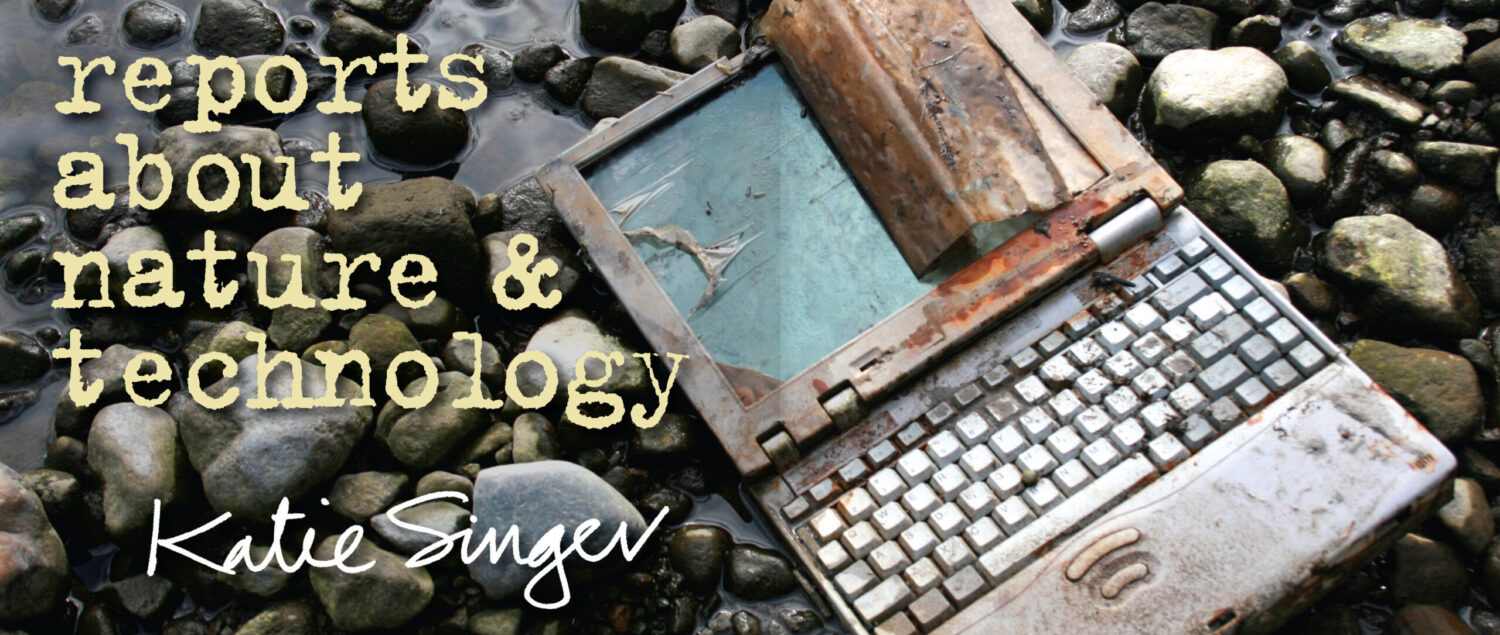Why I don’t consider climate change our root problem—
and I’d welcome economies that recognize limits to growth
by Katie Singer
A few days ago, my car’s thermometer registered 108 degrees. My landscaper-husband and I have lived in New Mexico for more than three decades and have never known high temperatures like these. He can’t work outside in such heat; I can only last for short spurts. Our (rented) house has no air conditioning. To get through this unprecedented month, we hang out in cafes or the library or sleep through the afternoons. Mainly, we wait for cooler weather.
I see climate change at work here; and—I do not consider it our root problem. At the root, we’ve got overshoot: unlimited manufacturing and consumption of goods on a planet with finite raw materials. Like wildlife habitat loss, increased population and income disparities, climate change is a consequence of overshoot.
Here are concepts that help me understand overshoot:
1. Manufacturing activates the global super factory that guzzles fossil fuels, extracts ores, powers smelters, makes chemicals, guzzles water, violates human rights, ships raw materials and finished items between continents—and generates hazardous waste that does not biodegrade from products’ cradles-to-graves.
2. Most energy and waste occur during manufacturing.
3. No technology is safe until proven safe. What does “safe” mean? For starters, since all electronics (including cellular sites, data centers, smart meters, EVs and chargers, solar PVs, industrial wind turbines and batteries) pose fire hazards, safe means that professional engineers (PEs) who hold liability have certified that the product’s and infrastructure’s fire and collapse hazards have been mitigated. Could “safe” also mean that a product’s chemicals and radiation emissions do not harm water, soil, air or living creatures…from its cradle to its grave? What governing agency could regulate and monitor such safety?
4. In 1865, in The Coal Question, William Jevons explained the paradox that efficiency actually increases energy use (and extractions, water use and waste, etc.): when manufacturers produce more of an efficient item and lower its cost, more consumers buy it. More production requires more energy, extractions, water and shipping—and generates more waste.
5. Operating anything electronic requires infrastructure—i.e., a power grid, telecom access networks, data storage centers. Adding infrastructure like 5G, smart utility meters, grid-connected rooftop solar, battery electricity storage, electric vehicle (EV) chargers, etcetera…makes operating existing infrastructure more complex. For example, the vast majority of homes with rooftop solar systems keep grid-connected and return unused electricity to their utility. Solar systems provide only intermittent power. They generate most energy from about 11am until 3pm; but electricity demand is greatest between 5pm and 8pm (prime time for air conditioners). Solar generation and electricity demands do not jive. Rooftop solar systems remain dependent on natural gas, coal, nuclear power or batteries, which all have unwanted ecological consequences.
6. Solar generation can weaken grid stability. When unused electricity generated by solar PVs is returned to the grid, the utility must closely monitor their power reserves. To prevent power surges, some utilities pay other utilities to take their extra power.
7. If we evaluate products from their cradles-to-graves, there’s no such thing as “green,” “clean,” “sustainable,” “zero-emitting,” “carbon-neutral.” These are marketing terms.
8. The United Nations’ Environmental Program’s 2016 report noted that countries that invest heavily in “green” technologies—Sweden, Germany, Finland and the U.S.—rank environmentally sustainable on the UN’s index of sustainable goals.24 China, the Democratic Republic of Congo and India—where ores are mined and smelted; where manufacturers make chemicals and dope silicon for solar panels and transistors; where e-waste is discarded…these countries generate CO2, toxic waste and worker hazards—and rank environmentally unsustainable with the UN’s sustainable development goals (SDGs).
9. Buying rooftop solar systems, generators, e-vehicles might be great for the economy and provide tax breaks for individual households. They also perpetuate overshoot.
Recognizing limits to growth
Recently, a friend explained to me that our society deems only profitable “solutions” worthwhile.
Still, I wonder: to decrease overall energy use, extractions, water and waste, could we shift from individually-owned cars to public transportation; biodegradable products; more walkable communities and re-localizing economies?
Could we build networks that strengthen local, regenerative agriculture and food storage, locally-made biodegradable and repairable tools? Could we decrease dependence on international supply chains (including for energy? Could we delay children’s use of electronics until they master reading, writing and math on paper…and can compost kitchen scraps?
Today, I’m admiring the work of farmers who build and modify their own tools, biodegradable stretch denim, and solar powered water pumps for small farm irrigation.
I’m also appreciating cool wash cloths and plenty of CCF (cumin, coriander, fennel) tea.
UPDATES
On seabed mining: The UN-affiliated International Seabed Authority missed a deadline on July 9 to enact regulations to allow the mining of deep-sea ecosystems for metals used in e-vehicle batteries. The Authority must therefore accept license applications from mining companies—even while it has no environmental safeguards for mining manganese, nickel, copper, cobalt, molybdenum, iron, gold, zinc, lead, barium, silver, sulphides, etc. from the deep sea. Deep sea ecosystems are essentially unrestorable. Nodules take tens of millions of years to form. Over half of the species living in the Pacific abyssal plains depend on nodules. Seabed mining is unlikely to reduce terrestrial mining-related deforestation significantly. Will financial institutions support a moratorium on deep sea mining?
Lithium Nevada Corporation’s mine at Thacker Pass: The 9th U.S. Court of Appeals denied the latest bid by conservationists and tribal leaders to block construction of a huge lithium mine already clear-cutting thousands of acres of public land. The Thacker Pass mine’s reserves could provide lithium for more than 1.5 million e-vehicles per year for 40 years. Read Max Wilbert on Thacker Pass.
Cell towers have a breadth of individual and cumulative environmental impacts. The FCC’s environmental review process “fails to vigorously enforce its rules, so that industry noncompliance is rampant.” See former FCC official Erica Rosenberg’s “Environmental Procedures at the FCC: A Case Study in Corporate Capture.”
KATIE SINGER writes about technology’s impacts on nature. She believes that if she’s not aware of the problem, then she can’t be part of the solution. She dreams that every user learns about the supply chain of one substance in their computer. Her books include An Electronic Silent Spring, Honoring Our Cycles and The Wholeness of a Broken Heart. Visit https://katiesinger.substack.com, https://OurWeb.tech and https://ElectronicSilentSpring.com.
Sign-up for a free or paid Subscription to Katie Singer’s Substack

